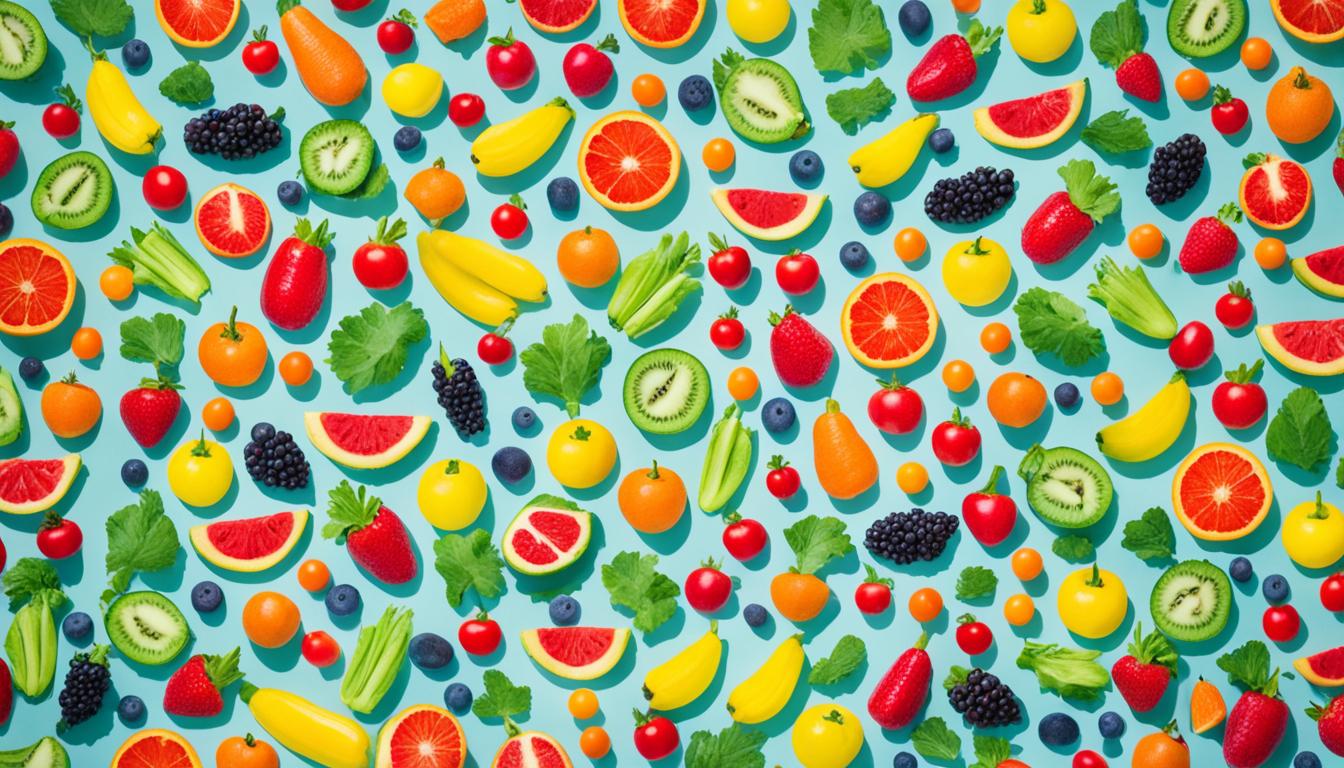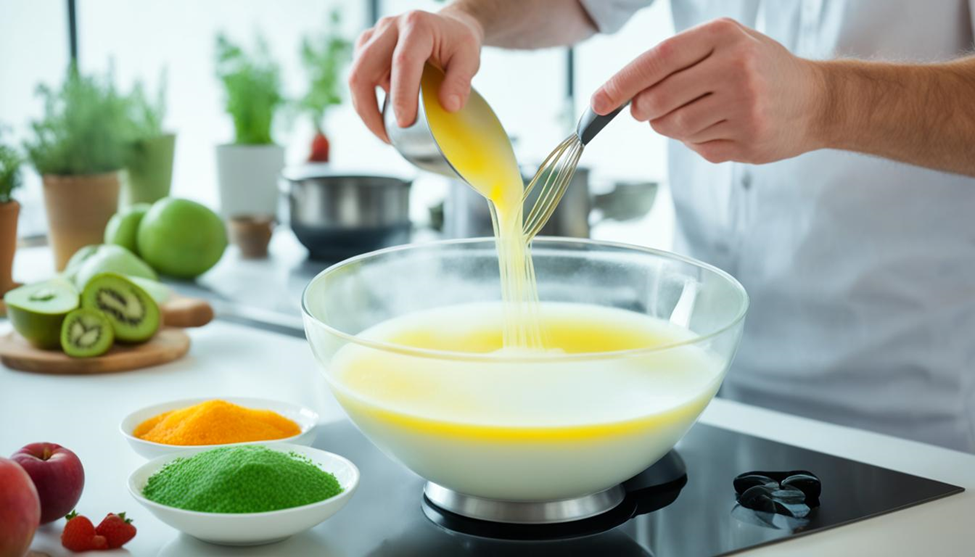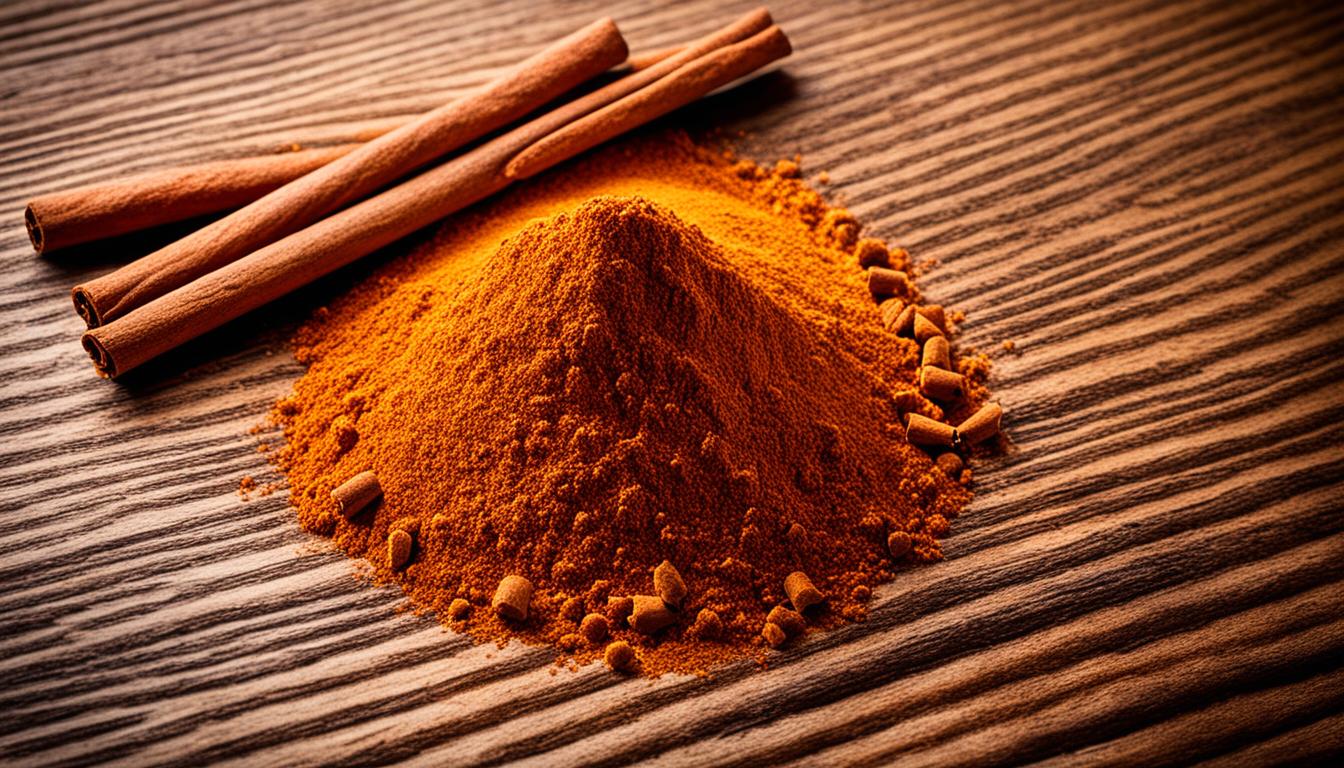
The Intricate Dance Between Food Syneresis and Weeping Explained
SUBSCRIBE TO OUR BLOG
Promotions, new products, and recipes.
Embark on a culinary journey into the heart of your kitchen as we unravel the enigmatic dance between food syneresis and weeping, phenomena that silently shape the texture and taste of your favorite dishes. In the world of culinary science, these processes play a crucial role in creating dishes with the perfect texture and mouthfeel.
Key Takeaways:
- Food syneresis refers to the release of moisture from gels or gel-like substances, while weeping is the separation of liquids from solids in culinary creations.
- Syneresis affects the texture and quality of food, while weeping can lead to the loss of desired texture and liquid separation in dishes.
- Understanding the factors that influence syneresis, such as protein coagulation and water retention, is essential for maintaining desirable food properties.
- Controlling temperature, handling techniques, and emulsification can help minimize syneresis in gel-based foods.
- Various cooking techniques can have different effects on food syneresis, with slow cooking methods generally minimizing moisture loss.
The Role of Syneresis in Food Texture and Quality
Syneresis plays a crucial role in determining the texture and quality of various food products. This natural phenomenon is closely linked to the gelation process, which involves the coagulation of proteins to form a stable network that traps water. Understanding the factors that influence syneresis, such as protein coagulation and water retention, is essential for maintaining the desired texture and quality of food.
Ever wondered how top chefs create those amazing dishes? Start your journey into modernist cooking with our products. Click here to shop now.
When proteins coagulate during the gelation process, they create a three-dimensional network that holds water molecules within the food structure. This network determines the texture of the final product, giving it the desired consistency, firmness, or viscosity. Proper protein coagulation is crucial for achieving the desired texture in food, as it helps maintain a stable structure that retains water.
On the other hand, excessive syneresis, or moisture release, can significantly affect the texture and quality of food. When too much moisture is lost, the food may become dry, rubbery, or crumbly, resulting in an undesirable eating experience. Therefore, controlling syneresis is essential for preserving the integrity of the food and ensuring a pleasurable dining experience.
To better understand the role of syneresis in food texture and quality, let's take a closer look at the gelation process and its impact on water retention.
The Gelation Process and Water Retention
The gelation process is a key factor in determining the texture and stability of food products. It involves the coagulation of proteins, such as those found in dairy products, meat, and plant-based alternatives, to form a gel-like structure. This gel provides a framework that traps water molecules, giving the food its desired texture and moistness.
Protein coagulation occurs through a complex interaction of amino acids, temperature, pH, and other factors. When proteins denature and coagulate, they undergo structural changes that enable them to bind water molecules within the gel network. This helps prevent excessive moisture release and contributes to the overall texture and juiciness of the food.
Proteins with strong water-binding properties, such as egg whites and gelatin, are commonly used to create gels with excellent water retention capabilities. These proteins form a dense network of bonds, which trap water and maintain the desired texture and consistency of the food.
Additionally, the presence of hydrocolloids, such as pectin or agar-agar, can further enhance water retention in gels. These ingredients interact with water molecules and create a more stable gel network, minimizing syneresis and improving the overall texture and quality of the food.
| Factors Influencing Syneresis | Effects on Food Texture and Quality |
|---|---|
| Protein coagulation | The degree of protein coagulation directly affects the texture of food. Proper coagulation ensures a stable structure that retains water, resulting in desirable texture and quality. |
| Water retention | Adequate water retention in the gel network is crucial for maintaining the desired texture and moistness of the food. Insufficient water retention can lead to dry, rubbery, or crumbly textures. |
| Gelation process | The gelation process determines the formation of a stable protein network that traps water. Proper gelation is essential for achieving the desired texture and quality of food. |

Techniques to Prevent Syneresis in Gel-Based Foods
Gel-based foods can be prone to syneresis, which is the release of moisture from the gel structure. To maintain the desired texture and quality of gel-based foods, it is important to employ techniques that prevent or minimize syneresis. Here are some effective methods:
1. Controlling Temperature
The temperature during the gelation process plays a crucial role in minimizing syneresis. High temperatures can lead to increased moisture release, resulting in undesirable texture and quality. By carefully controlling and monitoring the temperature, you can minimize syneresis and achieve the desired texture in gel-based foods.
2. Careful Handling and Processing Techniques
The way you handle and process the gel-based foods can also impact syneresis. Avoid excessive agitation or stirring, as this can disrupt the gel structure and lead to moisture release. Gentle handling and precise processing techniques can help retain moisture within the gel and reduce the risk of syneresis.
3. Emulsification
Emulsification is a technique that involves incorporating fat or emulsifiers into the gel-based foods. This process helps stabilize the gel structure and reduce the likelihood of syneresis. Fat acts as a barrier, preventing moisture from escaping the gel. Emulsifiers, such as lecithin, can enhance the stability of the gel and further minimize syneresis.
By implementing these techniques, you can maintain the integrity and texture of gel-based foods, ensuring they remain visually appealing and enjoyable. With careful temperature control, gentle handling, and the use of emulsification, you can prevent or minimize syneresis and create gel-based foods that are both aesthetically pleasing and delicious.
Exploring the Science Behind Weeping and Moisture Release
Weeping, the separation of liquids from solids, is a common occurrence in various culinary applications. In baking, it often manifests as liquid pooling on top of pies or pastries. In dairy products, it can result in the separation of whey from cheese. Understanding the underlying science behind weeping and moisture release allows chefs and cooks to develop techniques to minimize these issues and enhance the overall quality of their dishes.
Baking Science and Moisture Release
In the realm of baking, moisture release plays a pivotal role in achieving the perfect texture and appearance of baked goods. For example, when preparing pies or pastries, the presence of excess moisture can lead to a soggy crust and compromised texture. On the other hand, insufficient moisture can result in dry, crumbly products.
To mitigate these challenges, bakers employ various techniques to control moisture release. One common method involves blind baking the crust, which entails partially or fully baking the crust before adding the filling. This technique helps to set the crust's structure and seal its surface, reducing the likelihood of moisture ingress and subsequent release.
Moreover, the use of moisture-absorbing ingredients, such as breadcrumbs or ground nuts, can help prevent moisture from saturating the crust and compromising its texture. These porous substances act as a barrier, absorbing excess moisture and promoting a crispier, more stable crust.
Dairy Products and Weeping Phenomena
In the realm of dairy products, weeping can occur in various forms, affecting the texture and appearance of beloved ingredients like cheese. Weeping in cheese often involves the separation of whey, a liquid component, from the curd. This can lead to a loss of moisture and negatively impact the cheese's flavor and texture.
To address this issue, cheesemakers employ specific techniques to control moisture release in cheese production. One method involves adjusting the pH levels during the curdling process. By ensuring the proper acidity, cheesemakers can promote effective curd formation and minimize whey separation.
| Culinary Ingredient | Weeping Phenomena |
|---|---|
| Cheese | Weeping can result in the separation of whey from the curd. |
| Pies and Pastries | Moisture released during the baking process can pool on top, leading to a soggy crust. |
Crafting Techniques for Minimizing Moisture Release
The culinary arts offer various techniques to minimize moisture release and combat weeping, ensuring optimal texture and flavor in dishes. When cooking meats, proper resting techniques play a vital role in moisture retention. Allowing cooked meats to rest prior to carving promotes reabsorption of internal liquids, resulting in juicy, succulent cuts.
Alternatively, incorporating ingredients with high water-holding capacity, such as breadcrumbs or grated vegetables, can help retain moisture in meat-based preparations. These ingredients act as moisture "sponges," preventing excessive moisture loss during the cooking process.
Understanding the science behind weeping and moisture release empowers culinary artists to embrace innovative approaches and develop creative solutions that elevate the quality and appeal of their creations.
The Impact of Cooking Techniques on Food Syneresis
Different cooking techniques can significantly affect the occurrence of food syneresis. Understanding how cooking methods influence moisture loss is crucial for achieving desired culinary outcomes. While some techniques can exacerbate syneresis, others can help minimize it, resulting in juicier and less syneretic dishes.
High-Temperature Cooking Methods
Certain high-temperature cooking methods, such as grilling or searing, can cause meat to lose moisture, leading to increased syneresis. The intense heat quickly evaporates the water content, resulting in drier and less succulent dishes. To prevent excessive moisture loss, it is essential to carefully monitor the cooking time and temperature when using these techniques.
Slow Cooking Methods
In contrast to high-temperature cooking methods, slow cooking techniques like braising or sous vide can help minimize moisture loss and mitigate syneresis in meats. The gentle and prolonged cooking process allows the meat to retain more moisture, resulting in tender and juicy dishes. Slow cooking methods are particularly beneficial when working with cuts that are naturally prone to syneresis.
By adjusting the cooking techniques to match the desired outcome, chefs and cooks can control the extent of syneresis and ensure a more enjoyable dining experience for their guests.
As shown in the table below, different cooking techniques can have varying effects on food syneresis:
| Cooking Technique | Effect on Food Syneresis |
|---|---|
| Grilling | Increases syneresis due to high temperatures |
| Searing | Can lead to moisture loss and increased syneresis |
| Braising | Minimizes syneresis by retaining moisture through slow cooking |
| Sous Vide | Helps reduce syneresis by cooking at precise controlled temperatures for an extended period |
Molecular Gastronomy: Controlling Syneresis and Weeping
Molecular gastronomy, a scientific approach to cooking, offers innovative techniques for controlling syneresis and weeping in food preparations. By understanding the principles of molecular gastronomy, chefs can achieve desired textures and minimize moisture release, resulting in improved food stability and innovation.
One crucial concept in molecular gastronomy is gelatinization. Gelatinization refers to the process in which starches or proteins absorb water and swell, forming a stable gel-like structure. Controlling gelatinization is essential for minimizing syneresis and weeping, as it influences the water-holding capacity of food substances. By manipulating heating and cooling methods, chefs can precisely control the gelatinization process, leading to the desired texture and stability of dishes.
The effects of temperature on food stability play a significant role in achieving controlled syneresis and weeping. Different ingredients react to temperature changes in varying ways, affecting the stability of food products. In molecular gastronomy, chefs experiment with temperature manipulation techniques to influence gelatinization and minimize moisture release. Through precise temperature control during cooking and cooling, chefs can achieve optimum food stability and prevent unwanted syneresis or weeping.
Let us take a closer look at the influence of temperature on food stability using the following table:
| Temperature Range (°C) | Food Stability |
|---|---|
| 0-4 | Highly stable, minimal syneresis |
| 5-15 | Moderate stability, minimal to moderate syneresis |
| 16-30 | Low stability, moderate to significant syneresis |
| Above 30 | Unstable, significant syneresis |
By understanding and utilizing the principles of molecular gastronomy, chefs can push the boundaries of culinary innovation and create unique and stable dishes. Through precise control of gelatinization and temperature effects, they can achieve desired textures and minimize syneresis and weeping, resulting in improved food stability and a truly remarkable dining experience.
Protein Coagulation and its Effect on Food Weeping
Protein coagulation plays a critical role in food weeping. When proteins denature and coagulate, they form a network that can trap and retain water. This process is essential for achieving desired textures and minimizing weeping in various food preparations.
Chefs and cooks need to understand the factors that influence protein coagulation in order to optimize their culinary creations. Factors such as pH, temperature, and the presence of other ingredients can significantly impact the coagulation process.
By manipulating these factors, culinary professionals can control protein coagulation to achieve the desired texture and minimize weeping. This knowledge is invaluable in creating dishes that not only taste delicious but also have visually appealing presentations.
Factors Affecting Protein Coagulation
Protein coagulation can be influenced by several factors:
- pH: Different pH levels can alter protein structure and affect coagulation. For example, an acidic environment can cause proteins to coagulate more quickly.
- Temperature: The temperature at which proteins coagulate can vary depending on the specific protein. Some proteins coagulate at low temperatures, while others require higher temperatures.
- Presence of other ingredients: Certain ingredients, such as salt or acids, can interact with proteins and impact their coagulation properties.
Understanding these factors and their effects on protein coagulation allows chefs to make informed decisions when creating recipes and developing cooking techniques.

Water Retention Strategies to Combat Food Syneresis
Water retention plays a crucial role in combating food syneresis and maintaining the desired texture and quality of culinary creations. By implementing various culinary techniques and utilizing hydrocolloids, chefs can enhance water retention and minimize moisture release.
The Use of Hydrocolloids
Hydrocolloids, such as gums and starches, are natural or synthetic substances that have the ability to bind water and form gels. These ingredients can improve the stability and texture of gels, reducing the occurrence of syneresis. By incorporating hydrocolloids into gel-based foods, chefs can create products that retain moisture more effectively, resulting in a satisfying and consistent texture.
Proper Ingredient Selection and Processing Techniques
Choosing the right ingredients and employing proper processing techniques are essential for maintaining water retention and minimizing syneresis. By selecting ingredients with higher water-holding capacities, chefs can enhance the overall moisture content of their dishes. Additionally, employing techniques such as cold processing or low-temperature cooking methods can help preserve water within the food matrix and reduce moisture loss.
Optimal Storage Conditions
The way food is stored after preparation can significantly impact water retention. Improper storage conditions, such as exposure to air or fluctuating temperatures, can lead to increased syneresis. To combat this, it is important to store gel-based foods in airtight containers and refrigerate them at the appropriate temperature. Maintaining a controlled environment helps preserve water content and prevents excessive moisture release.
Achieving Culinary Excellence through Water Retention
By implementing effective water retention strategies, chefs can successfully combat food syneresis and maintain the desired texture and quality of their creations. The use of hydrocolloids, proper ingredient selection, processing techniques, and optimal storage conditions all contribute to retaining water in culinary preparations. Ultimately, water retention techniques play a vital role in achieving culinary excellence and satisfying dining experiences.
Conclusion
The intricate dance between food syneresis and weeping lies at the heart of culinary science. Understanding the underlying food chemistry and employing effective techniques to control these processes is crucial for achieving desirable textures and maintaining the quality of culinary creations. Whether it's ensuring the perfect consistency of a gel-based dessert or preventing unwanted moisture release in meats or dairy products, chefs and cooks rely on their knowledge of food preservation and innovative culinary arts to create memorable dining experiences.
Advancements in food science have paved the way for exciting developments in the field of food innovation. Chefs and cooks constantly push the boundaries, seeking new ways to combat syneresis and weeping through inventive approaches. By harnessing molecular gastronomy techniques and capitalizing on the interplay between ingredients and the gelation process, they create remarkable culinary masterpieces that captivate the senses and elevate the dining experience to new heights.
The quest for culinary excellence continues to thrive, driven by a deep understanding of food science and a relentless pursuit of perfection. As chefs and cooks delve deeper into the art and science of food, they uncover new methods to preserve and enhance our favorite flavors. Through their expertise, passion, and commitment to innovation, they shape the future of the culinary arts and tantalize our taste buds with unrivaled creations.
FAQ
What is food syneresis?
Food syneresis refers to the release of moisture from gels or gel-like substances, impacting the texture and quality of culinary creations.
What is weeping in the context of food?
Weeping refers to the separation of liquids from solids, observed in various culinary applications, such as the pooling of liquid on top of pies or the separation of whey from cheese.
What is the role of syneresis in food texture and quality?
Syneresis is closely tied to the gelation process, affecting the texture of foods. Excessive moisture release can lead to a loss of desired texture and overall quality.
What are techniques to prevent syneresis in gel-based foods?
Techniques such as controlling temperature during gelation, careful handling and processing, and emulsification can help stabilize the gel structure and reduce syneresis.
How does cooking technique impact food syneresis?
Different cooking techniques have varying effects on food syneresis. High-temperature cooking methods can lead to increased moisture loss, while slow cooking methods can minimize syneresis and result in juicier dishes.
How can molecular gastronomy help control syneresis and weeping?
Molecular gastronomy provides innovative techniques to manipulate ingredients and cooking processes, enabling chefs to minimize moisture release and achieve desired textures.
What is the relationship between protein coagulation and food weeping?
Protein coagulation plays a critical role in food weeping. The formation of coagulated protein networks can trap and retain water, affecting the texture and minimizing weeping.
What are water retention strategies to combat food syneresis?
Enhancing water retention can be achieved through the use of hydrocolloids, careful ingredient selection, processing techniques, and proper storage conditions.
What is the significance of food syneresis in food preservation?
Understanding and managing syneresis are crucial in preserving the quality of various food products, as excessive moisture release can lead to texture degradation and reduced shelf life.
Well That's the Story. I hope it was helpful. Let's Hear Your Thoughts!
We've shared our insights, and now it's your turn! Have an opinion, a question, or a story to share about this article? Dive into the comments below and join the conversation. Your voice is a crucial part of this community, and we're eager to hear what you have to say.
Thought that was fascinating? Here’s another story you might like:
See: The Hydrocolloid Glossary
For further reading:
The Art and Science of Food Aesthetics
Every dish deserves the perfect texture to complement its flavors. Why settle for anything less than perfection? With Cape Crystal Brands Food Texture products, you don't have to. Whether you're crafting velvety sauces, glistening gels, or fluffy mousses, our range ensures you get the consistency you desire every single time.
Don't just cook—create masterpieces. Dive into the world of culinary textures and elevate every meal. Shop now and experience the magic of Cape Crystal!
🛍️ Click Here to Explore Cape Crystal Brands Food Texture Products!

Chef Edmund
Edmund McCormick is the founder of Cape Crystal Brands and EnvironMolds LLC. He is the author of several non-fiction “How-to” books, past publisher of the ArtMolds Journal Magazine, editor of Beginner's Guide to Hydrocolloids, and author of six eBook recipe books available for download on this site. He resides in Far Hill, NJ and lives and breathes his food blogs as both writer and editor. You can follow him on Twitter and Linkedin.
- Choosing a selection results in a full page refresh.





